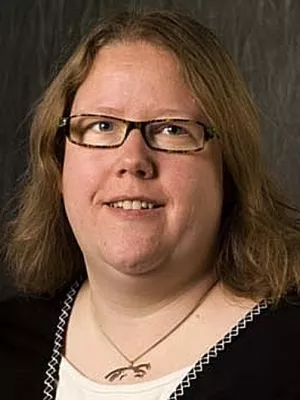
Anne Nielsen
Projektkoordinator

3000 Years of past regional and local land-use and land-cover change in the southeastern Swedish coastal area : Early human-induced increases in landscape openness as a potential nutrient source to the Baltic Sea coastal waters
Författare
Summary, in English
Reconstructions of past land use and related land-cover changes at local and regional scales are needed to evaluate the potential long-term impacts of land use on the coastal waters of the Baltic Sea. In this purpose, we selected the Gamleby area at the Swedish Baltic Sea coast for a case study. We use a new, high resolution pollen record from a small lake (Lillsjön) located 3.6 km NNW of the bay Gamlebyviken and detailed analysis of the available archeological data to reconstruct local land-use changes over the last 3000 years. To estimate land-cover change at local (2–3 km radius area) and regional (50 km radius area) scales we use four additional, published pollen records from two small and two large lakes (25–70 km S of Lillsjön) and the Landscape Reconstruction Algorithm, a pollen-vegetation modeling scheme. Results show that regional and local (small lakes Lillsjön and Hyttegöl) land-cover changes are comparable over the last 1500 years (Late Iron Age to present), and that landscape openness was much larger locally than regionally (difference of 20–40% cover over the last 500 years). The periods of largest potential impacts on the Gamlebyviken Bay from regional and local land use are 200–950 CE (Late Iron Age) and 1450 CE to present, and of lowest potential impacts 950–1450 CE. The question on whether the large landscape openness 1150–50 BCE and significant afforestation 50 BCE–200 CE reconstructed for Lillsjön’s area are characteristic of the Gamlebyviken region will require additional pollen records in the catchment area.
Avdelning/ar
- Kvartärgeologi
- MERGE: ModElling the Regional and Global Earth system
- BECC: Biodiversity and Ecosystem services in a Changing Climate
Publiceringsår
2024
Språk
Engelska
Sidor
56-73
Publikation/Tidskrift/Serie
Holocene
Volym
34
Issue
1
Dokumenttyp
Artikel i tidskrift
Förlag
SAGE Publications
Ämne
- Physical Geography
Nyckelord
- Archeological data
- Gamlebyviken
- Landscape Reconstruction Algorithm
- Late Holocene
- pollen analysis
- REVEALS and LOVE models
Status
Published
ISBN/ISSN/Övrigt
- ISSN: 0959-6836

